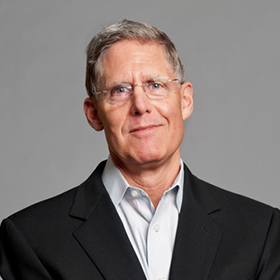Someone else’s passion can inspire you, and perhaps draw you in to work with them. But if you are really going to commit yourself—your expertise and energy, as well as your money—you have to clarify your philanthropic priorities, based on your values and beliefs.
There are no inherently right choices. Your philanthropic priorities will be determined by the things you are passionate about and believe are worth doing. As you begin to reflect on what those things might be, you may find it helpful to think about some of the broad categories that have provided anchor points for others’ efforts over the years:
People.You may be drawn to help a specific group of people address circumstances that are defining (and probably limiting) their lives. Larry and Joyce Stupski’s foundation, for example, seeks to “improve life options for children of color and poverty.”i
More from Give Smart
Now available on Amazon.comProblems.
A particular problem may also compel your attention. John Dorr advocated tirelessly for highway officials to paint a white stripe on the far right side of the road to demarcate the outside edge of the pavement, ultimately saving countless numbers of lives.
Place.
Maintaining or restoring the health and vitality of a particular geography is another possible focus area. Dwayne Steele, a Kansas native who put down roots in Hawaii, embarked on a philanthropic quest to preserve the Hawaiian language. Hawaiians and local philanthropists claim he initiated a “Hawaiian cultural renaissance” and credit him with not just the preservation of the language, but its rebirth.ii
Pathway.
A strong-held belief in the importance of a particular approach provides the foundation of many philanthropists’ activities. The Omidyars’ belief in the power of technology and individuals to drive change is one example; belief in the power of a mentor to guide and support youth provides another.
Philosophy.
Your beliefs about how the world works, or should work, might be your anchor, as they are for George Soros, founder and chairman of the Open Society Foundations, which seek to build “vibrant and tolerant democracies.”iii
A Personal Journey of Discovery
You may find that there are several things you care deeply about (or, if you are a foundation executive, that your donor’s intent is broad and vague). At this stage that’s not a problem because you’re simply identifying what you will (and won’t) try to learn more about in the near future.
Take the time to learn and to expand your horizons. Talk with your spouse and family. Go on an extended retreat. Bounce ideas off mentors, colleagues, and advisors—he wise men and women in your life. Read (a lot). Visit nonprofit organizations whose work other people admire. Listen to other engaged philanthropists talk about what they do. Capture your thoughts and revisit them. One philanthropist we know began his philanthropic journey by scribbling down three words: “youth,” “learning,” and “community.” Revisited and tested over time, those same three words have now informed and guided more than twenty years of successful philanthropic efforts.
Clarity is Critical
Clarifying your values is the best way we know to ensure that your philanthropy will express—and continue to express—what matters most to you. The specific priorities you establish today may evolve and change over the course of time. But deep personal values tend to persist and, as a result, they can provide a continuing touchstone throughout a lifetime of philanthropy. If you establish a foundation intended to last in perpetuity, explicitly clarifying your values will make it far more likely that your foundation will continue to embody and act on them long after you’ve left the stage.
Ambiguity is the Enemy
Surfacing your personal beliefs and then talking about them with others can be a messy, emotional, tiring process, one that’s likely to be imperfect, at best. This is a discomfort well worth bearing, however, because the costs of ambiguity on this front can be extremely high.
Ambiguity makes it harder for others to work effectively with and for you. Ambiguity will make it harder to make key strategic decisions downstream: identifying a real opportunity, as opposed to a diversion, for instance; or selecting the right grantees.
Philanthropy is Not a One-Time Event
Wrestling with your philanthropic aspirations isn’t a one-time event. Any number of triggers might persuade you, or your heirs and trustees, or your foundation staff, to revisit the question of priorities. For example, your personal perspective may change over time, as your experiences accumulate and your interests evolve. Or a change in financial circumstances (in either direction) may force hard choices and new decisions.
Over time, the people engaged in your philanthropy are also likely to change. Your children will become old enough to participate in your family foundation, or your foundation will bring on new leadership. New participants will ask new questions, pushing back on existing priorities. Or the issues you care about may change based on new solutions or new attention from government or other nonprofits. If you are clear enough about your aspirations, values, and beliefs, the new priorities that emerge will continue to reflect the good you most want to see done in the world.
Examples in Chapter 1 include: Pierre and Pam Omidyar; Julius Rosenwald; the Dorr Foundation; the NoVo Foundation; the Stupski Foundation; Accelerate Brain Cancer Cure; Duncan Campbell; the Open Society Foundations; the Peter G. Peterson Foundation; the Bill & Melinda Gates Foundation; the John D. and Catherine T. MacArthur Foundation



